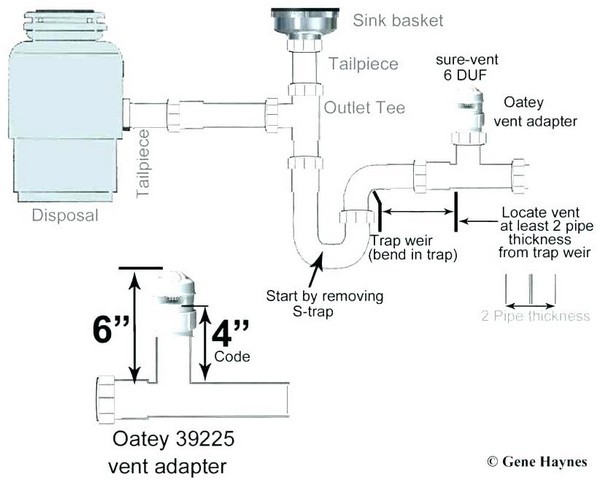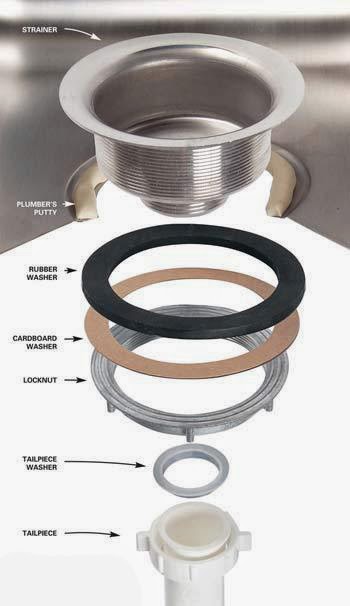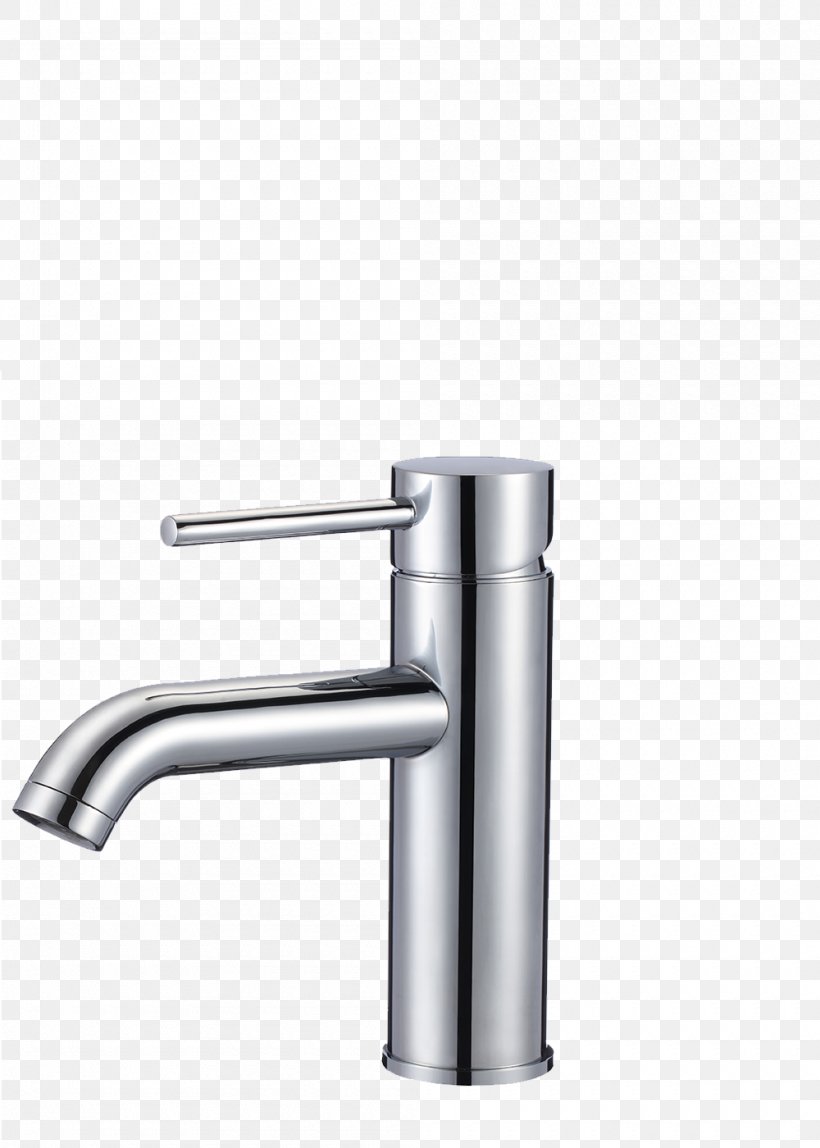1. Kitchen Sink Plumbing Basics
When it comes to your kitchen, the plumbing for your sink is one of the most important elements. It's responsible for bringing in clean water for cooking and cleaning, and for removing dirty water and food scraps. Understanding the basics of kitchen sink plumbing is essential for any homeowner or renter.
2. How to Install a Kitchen Sink
Installing a new kitchen sink may seem like a daunting task, but with the right tools and knowledge, it can be done easily. The first step is to decide on the type of sink you want and measure the space for it. Then, you'll need to connect the water supply lines and drain pipes. It's important to follow the manufacturer's instructions and local plumbing codes to ensure a successful installation.
3. Common Kitchen Sink Plumbing Problems
Like any plumbing system, kitchen sink plumbing can encounter problems over time. Some of the most common issues include clogged drains, leaky pipes, and low water pressure. These problems can be caused by a variety of factors, such as food scraps, grease buildup, or faulty installation. It's important to address these issues promptly to prevent further damage to your plumbing.
4. Kitchen Sink Plumbing Diagram
Having a basic understanding of the layout of your kitchen sink plumbing can be helpful when troubleshooting any issues. A typical kitchen sink plumbing diagram includes a hot and cold water supply line, a drain pipe, and a vent pipe. The hot and cold water supply lines are connected to the faucet, while the drain pipe carries wastewater to the main sewer line. The vent pipe releases air from the drain to prevent clogging and maintain proper pressure.
5. Kitchen Sink Plumbing Parts
Knowing the different parts of your kitchen sink plumbing can also be useful for troubleshooting and making repairs. Some of the main components include the faucet, water supply lines, drain pipes, and sink strainer. Depending on the type of sink and its installation, there may also be additional parts such as a garbage disposal unit or a dishwasher connection.
6. Kitchen Sink Plumbing Vent
The plumbing vent is an important part of your kitchen sink plumbing system, as it helps maintain proper air pressure and prevent sewer gas from entering your home. It also helps prevent clogs by allowing air to escape from the drain. A plumbing vent can be found on the roof of your home or connected to a branch vent that leads to the main vent stack.
7. Kitchen Sink Plumbing Code
When installing or making repairs to your kitchen sink plumbing, it's important to follow local plumbing codes. These codes are in place to ensure the safety and functionality of your plumbing system. Some common plumbing code requirements for kitchen sinks include the type and size of pipes, the distance between the sink and vent, and the slope of drain pipes.
8. Kitchen Sink Plumbing Repair
If you encounter any issues with your kitchen sink plumbing, it's important to address them promptly to prevent further damage and costly repairs. Simple repairs such as unclogging a drain or tightening a loose connection can be done by most homeowners. However, more complex problems may require the help of a professional plumber.
9. Kitchen Sink Plumbing Tools
Having the right tools on hand can make any plumbing job easier. Some essential tools for kitchen sink plumbing include a pipe wrench, plunger, drain snake, and adjustable pliers. It's also important to have safety equipment such as gloves and safety glasses when working with plumbing.
10. Kitchen Sink Plumbing Maintenance
Regular maintenance of your kitchen sink plumbing can help prevent major issues and keep your system functioning properly. Some simple maintenance tasks include regularly cleaning the sink and drain with a mixture of baking soda and vinegar, avoiding putting grease and large food scraps down the drain, and checking for leaks and drips. It's also important to have your plumbing inspected by a professional plumber every few years.
Why Proper Kitchen Sink Plumbing is Essential for a Functional Home
/how-to-install-a-sink-drain-2718789-hero-24e898006ed94c9593a2a268b57989a3.jpg)
Understanding the Importance of Kitchen Sink Plumbing
 Proper kitchen sink plumbing is crucial for a functional and well-designed home. The kitchen sink is the most used fixture in any household and is essential for daily tasks such as washing dishes, preparing food, and filling up water bottles. Therefore, it is important to have a well-planned and efficient plumbing system in place to ensure smooth and hassle-free use of the kitchen sink.
Leak-proof and Efficient Drainage System
One of the main reasons why proper kitchen sink plumbing is important is to ensure a leak-proof and efficient drainage system. A leaky kitchen sink can cause major problems, such as water damage and mold growth, which can be costly to repair. It can also lead to unpleasant odors and the build-up of bacteria, making the kitchen an unsanitary place to prepare food. A well-installed and maintained plumbing system can prevent these issues and keep your kitchen clean and hygienic.
Preventing Costly Repairs
Another benefit of having proper kitchen sink plumbing is that it can help prevent costly repairs in the future. A faulty plumbing system can cause damage to your kitchen cabinets, flooring, and walls, which can be expensive to fix. By investing in high-quality plumbing materials and hiring a professional plumber for installation and maintenance, you can avoid these costly repairs and save money in the long run.
Proper kitchen sink plumbing is crucial for a functional and well-designed home. The kitchen sink is the most used fixture in any household and is essential for daily tasks such as washing dishes, preparing food, and filling up water bottles. Therefore, it is important to have a well-planned and efficient plumbing system in place to ensure smooth and hassle-free use of the kitchen sink.
Leak-proof and Efficient Drainage System
One of the main reasons why proper kitchen sink plumbing is important is to ensure a leak-proof and efficient drainage system. A leaky kitchen sink can cause major problems, such as water damage and mold growth, which can be costly to repair. It can also lead to unpleasant odors and the build-up of bacteria, making the kitchen an unsanitary place to prepare food. A well-installed and maintained plumbing system can prevent these issues and keep your kitchen clean and hygienic.
Preventing Costly Repairs
Another benefit of having proper kitchen sink plumbing is that it can help prevent costly repairs in the future. A faulty plumbing system can cause damage to your kitchen cabinets, flooring, and walls, which can be expensive to fix. By investing in high-quality plumbing materials and hiring a professional plumber for installation and maintenance, you can avoid these costly repairs and save money in the long run.
Designing the Perfect Kitchen Sink Plumbing System
 Proper kitchen sink plumbing is not only essential for functional purposes but also for a well-designed kitchen. The plumbing system should be planned and installed in a way that complements the overall design and layout of your kitchen. This includes choosing the right size and style of sink, faucet, and pipes that match the aesthetic of your kitchen. A well-designed plumbing system can enhance the overall look of your kitchen and add value to your home.
Efficient Water Usage
With the increasing focus on sustainable living, having proper kitchen sink plumbing can also help in conserving water. By installing low-flow faucets and making sure there are no leaks in the system, you can reduce your water usage and contribute to a greener environment. This can also lead to cost savings on your water bill.
In conclusion, proper kitchen sink plumbing is crucial for a functional, efficient, and well-designed home. It not only ensures a leak-proof and hygienic environment but also helps in preventing costly repairs and promoting sustainable living. Therefore, it is essential to invest in high-quality plumbing materials and hire a professional plumber for installation and maintenance to ensure a seamless and enjoyable kitchen experience.
Proper kitchen sink plumbing is not only essential for functional purposes but also for a well-designed kitchen. The plumbing system should be planned and installed in a way that complements the overall design and layout of your kitchen. This includes choosing the right size and style of sink, faucet, and pipes that match the aesthetic of your kitchen. A well-designed plumbing system can enhance the overall look of your kitchen and add value to your home.
Efficient Water Usage
With the increasing focus on sustainable living, having proper kitchen sink plumbing can also help in conserving water. By installing low-flow faucets and making sure there are no leaks in the system, you can reduce your water usage and contribute to a greener environment. This can also lead to cost savings on your water bill.
In conclusion, proper kitchen sink plumbing is crucial for a functional, efficient, and well-designed home. It not only ensures a leak-proof and hygienic environment but also helps in preventing costly repairs and promoting sustainable living. Therefore, it is essential to invest in high-quality plumbing materials and hire a professional plumber for installation and maintenance to ensure a seamless and enjoyable kitchen experience.

















:max_bytes(150000):strip_icc()/how-to-install-a-sink-drain-2718789-hero-24e898006ed94c9593a2a268b57989a3.jpg)












































:no_upscale()/cdn.vox-cdn.com/uploads/chorus_asset/file/19495086/drain_0.jpg)















